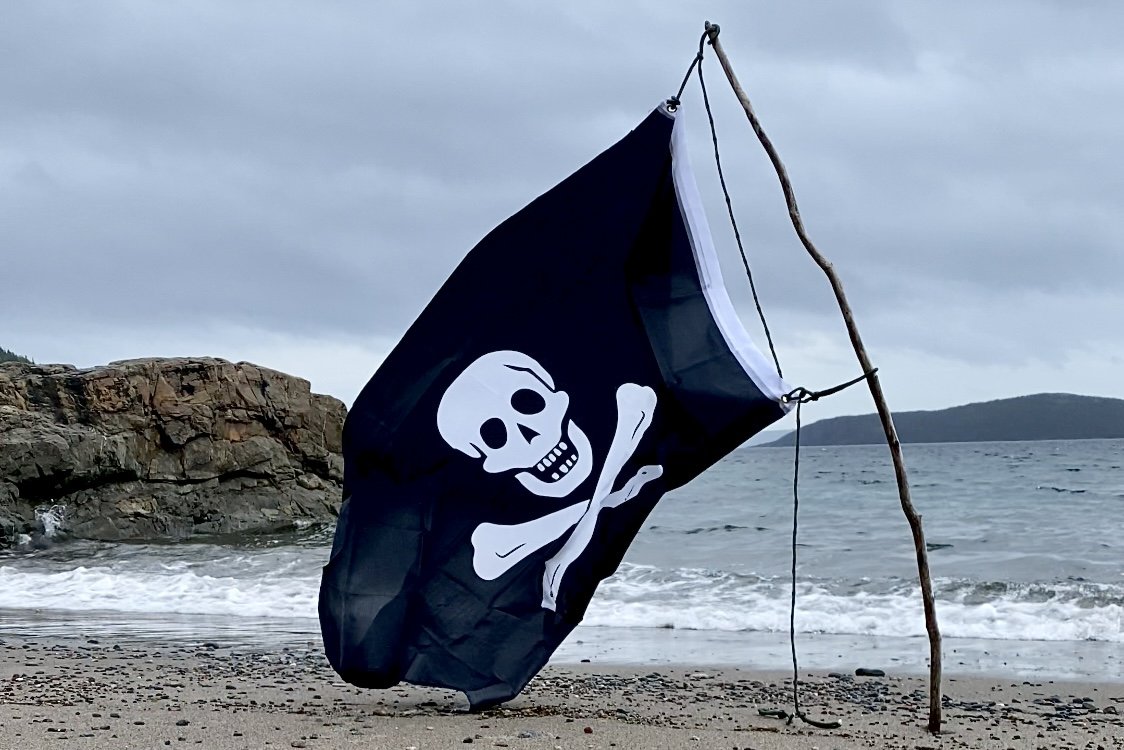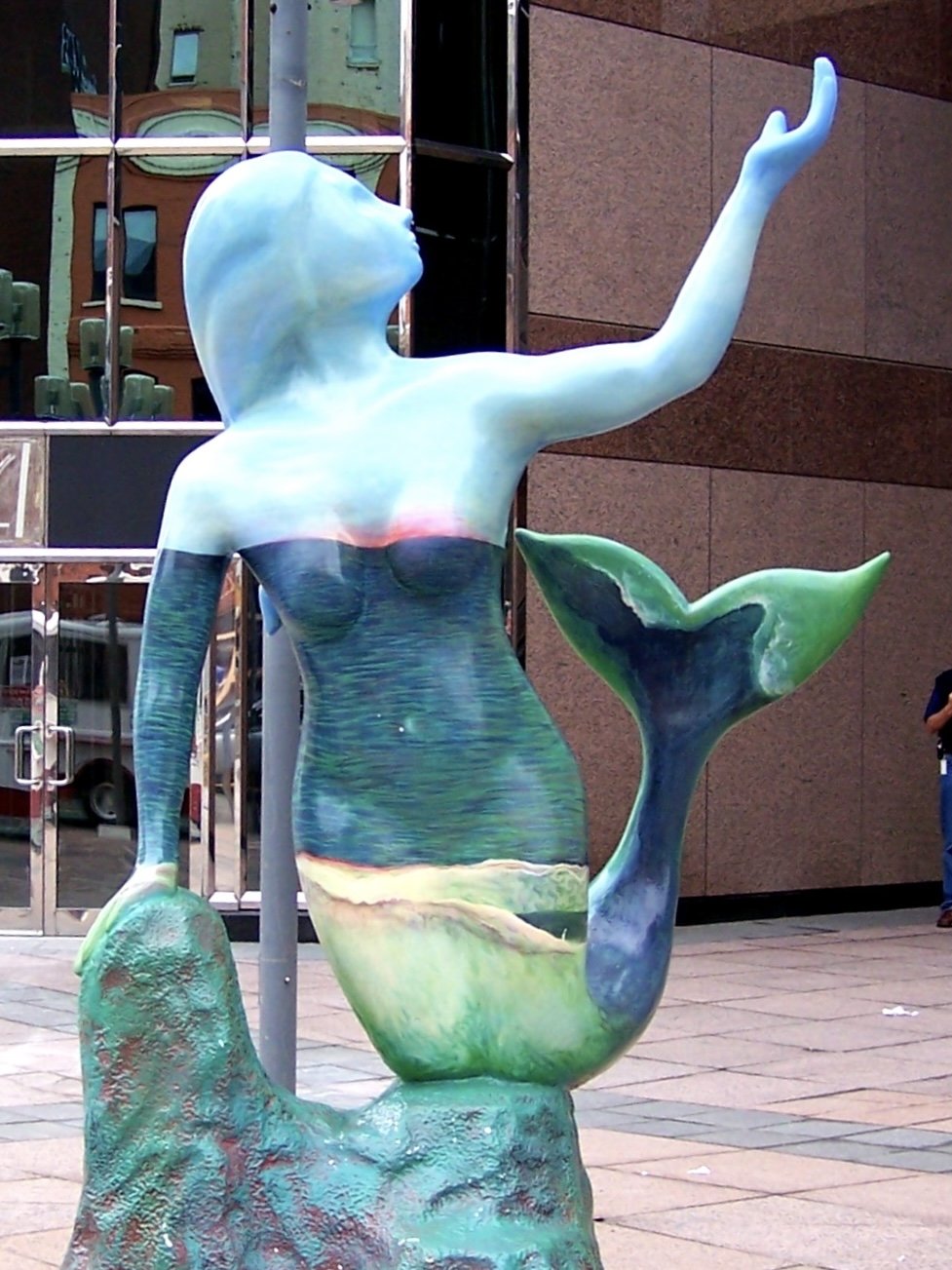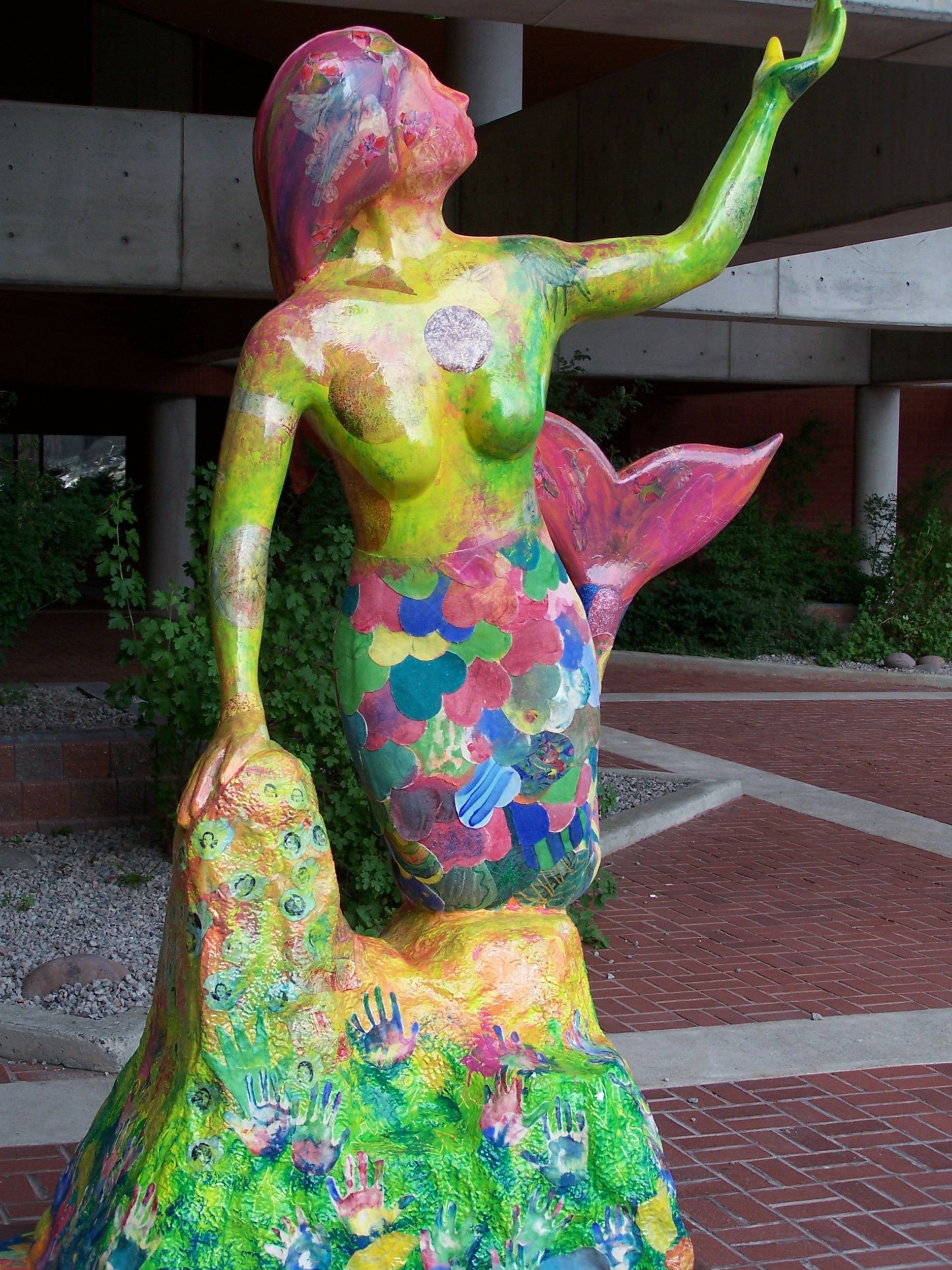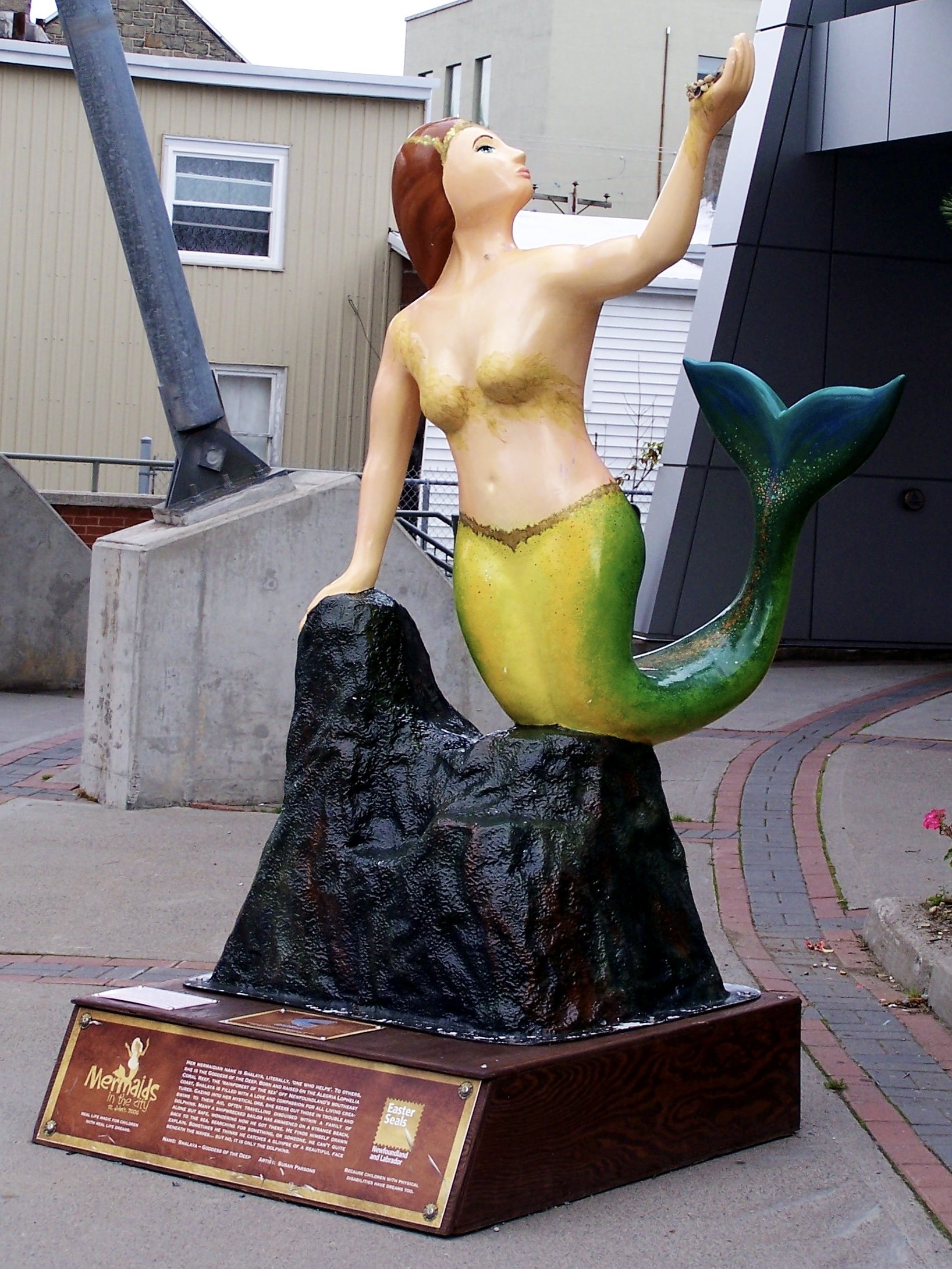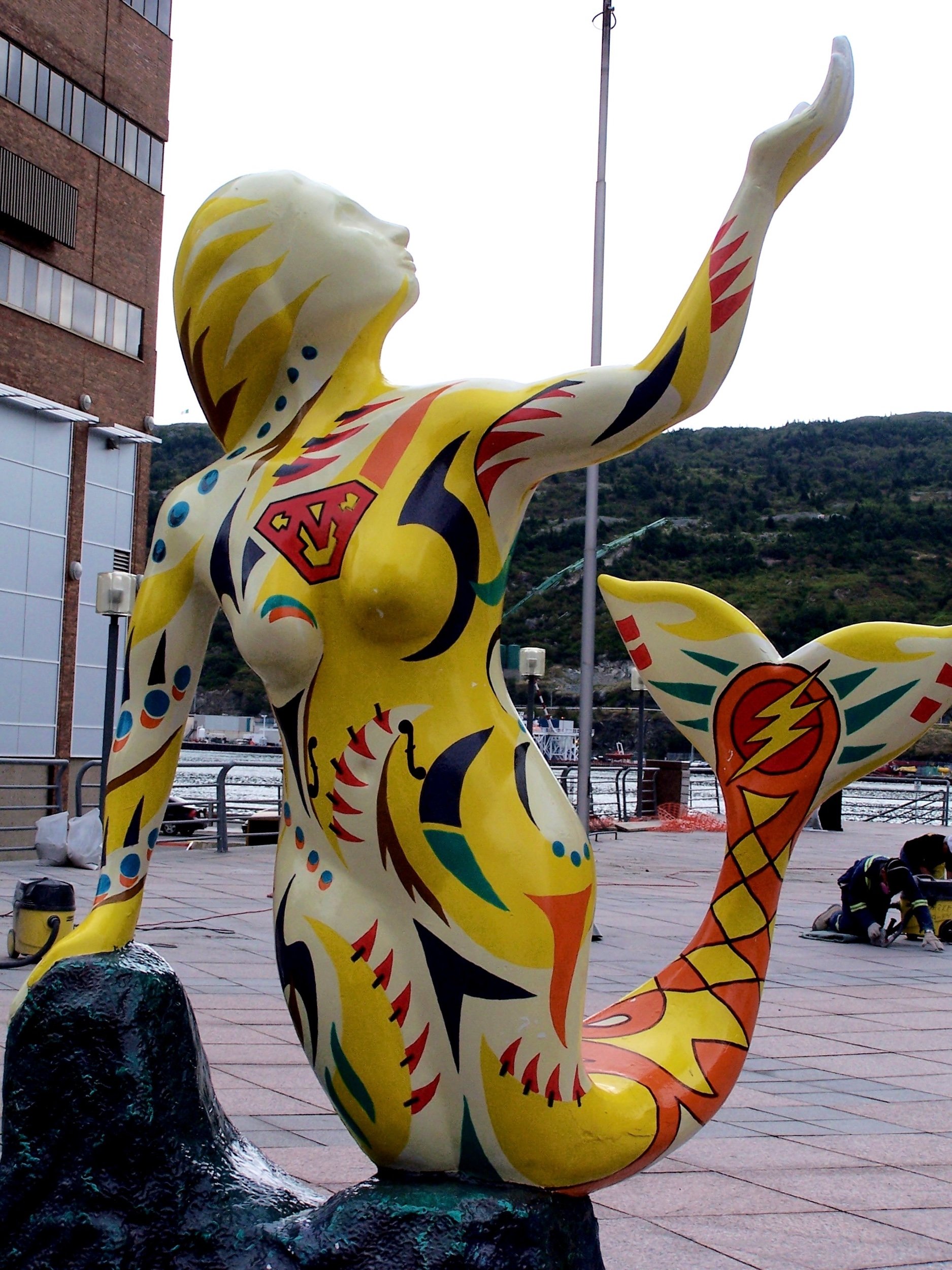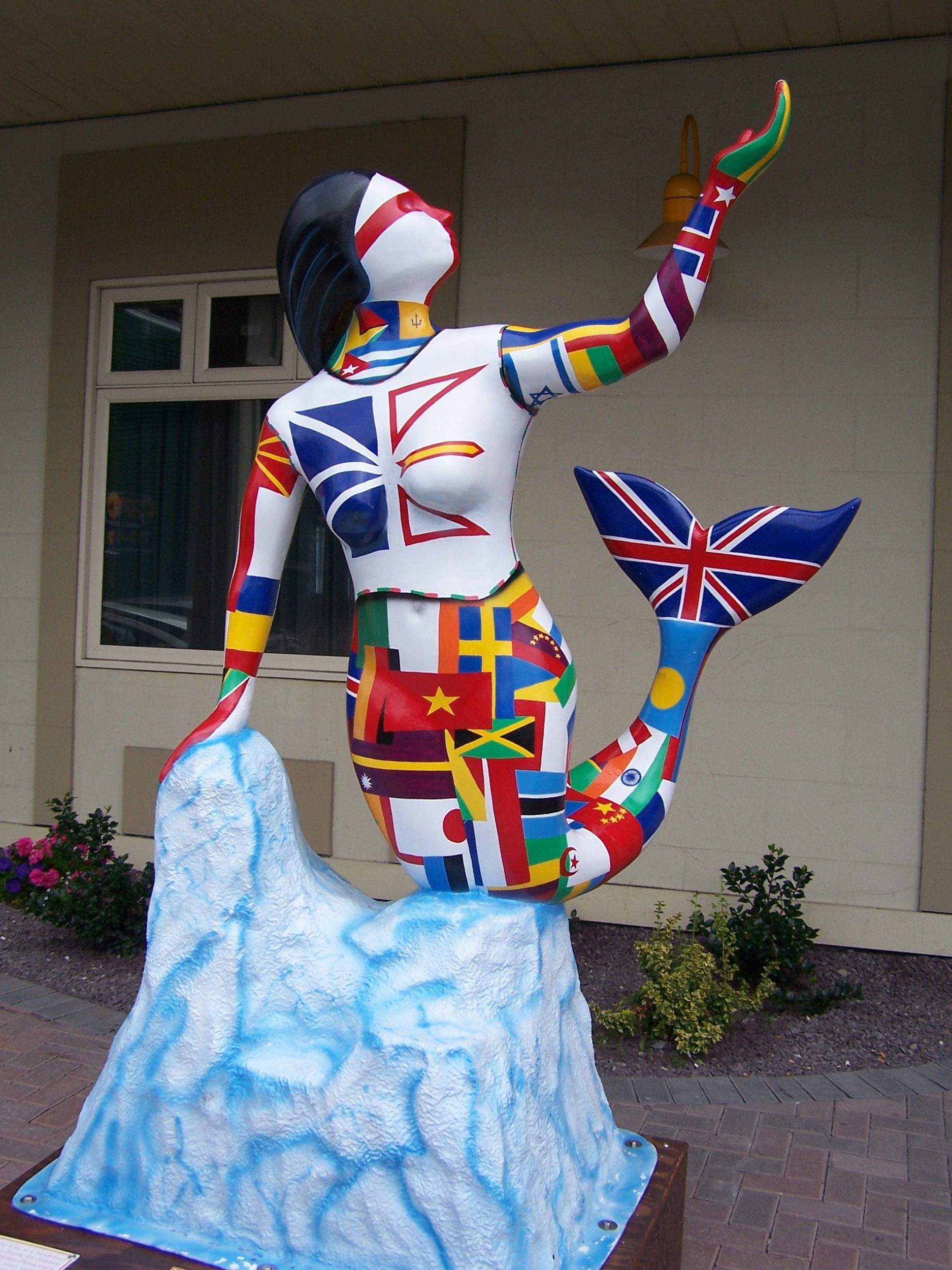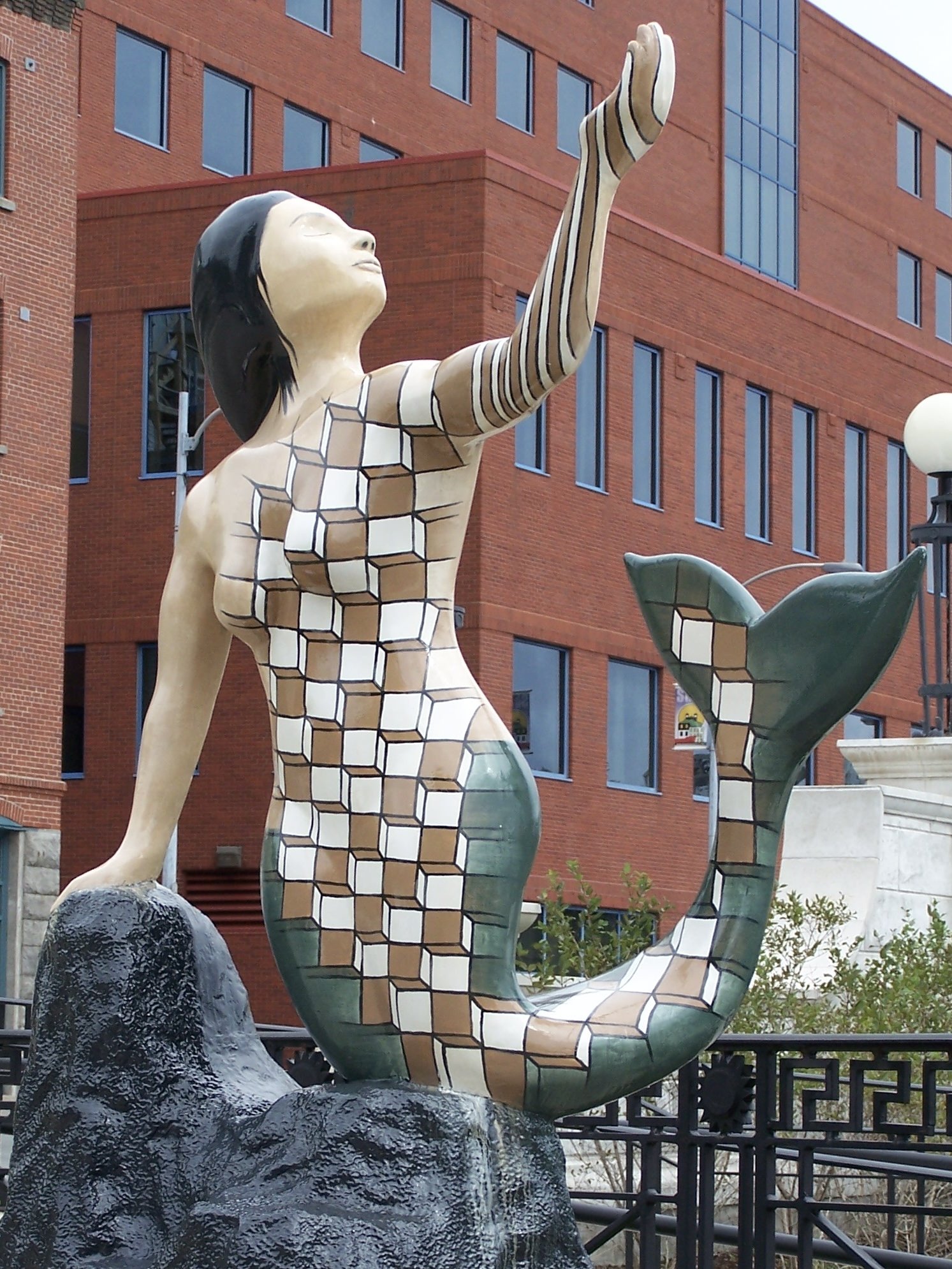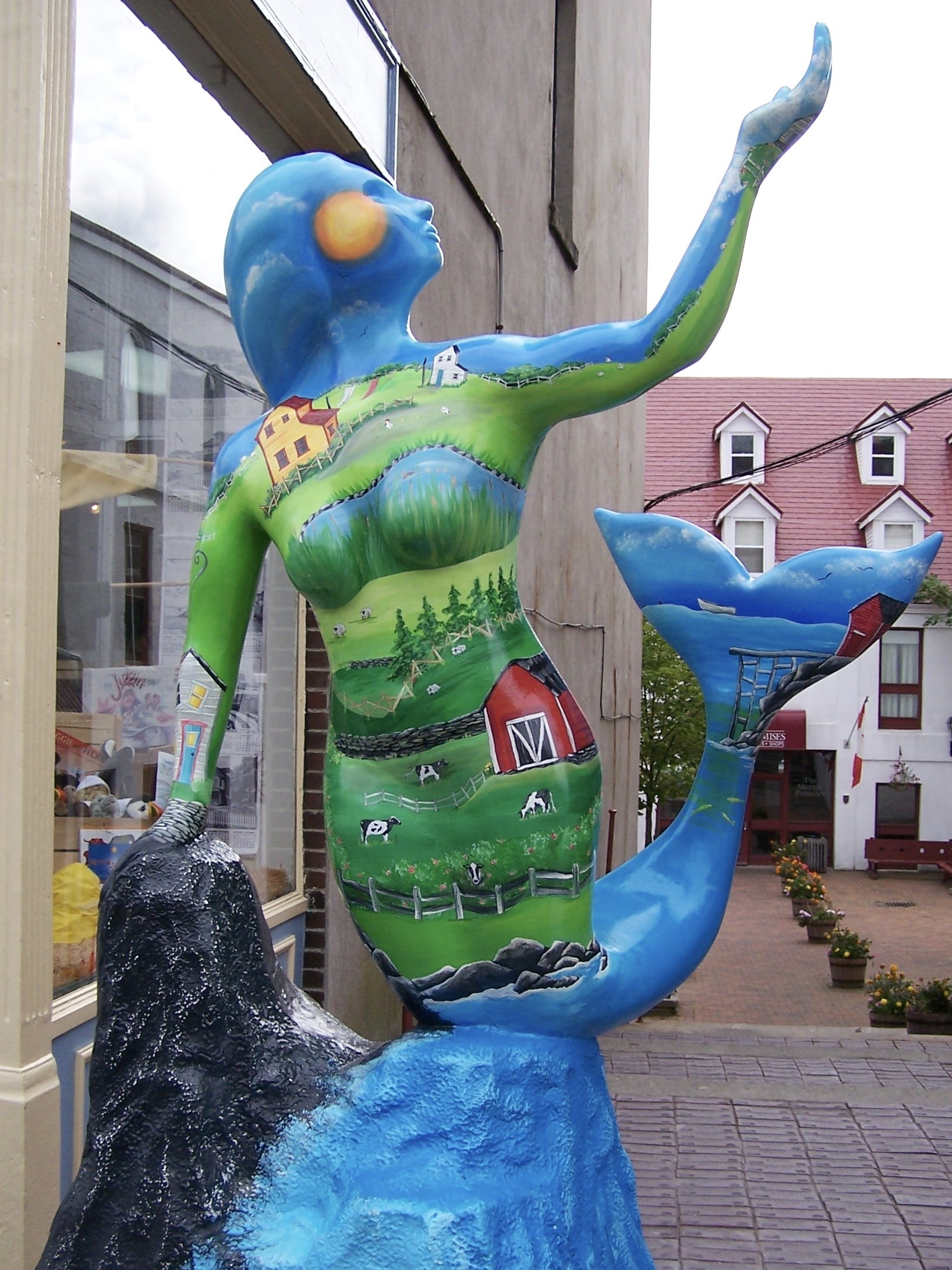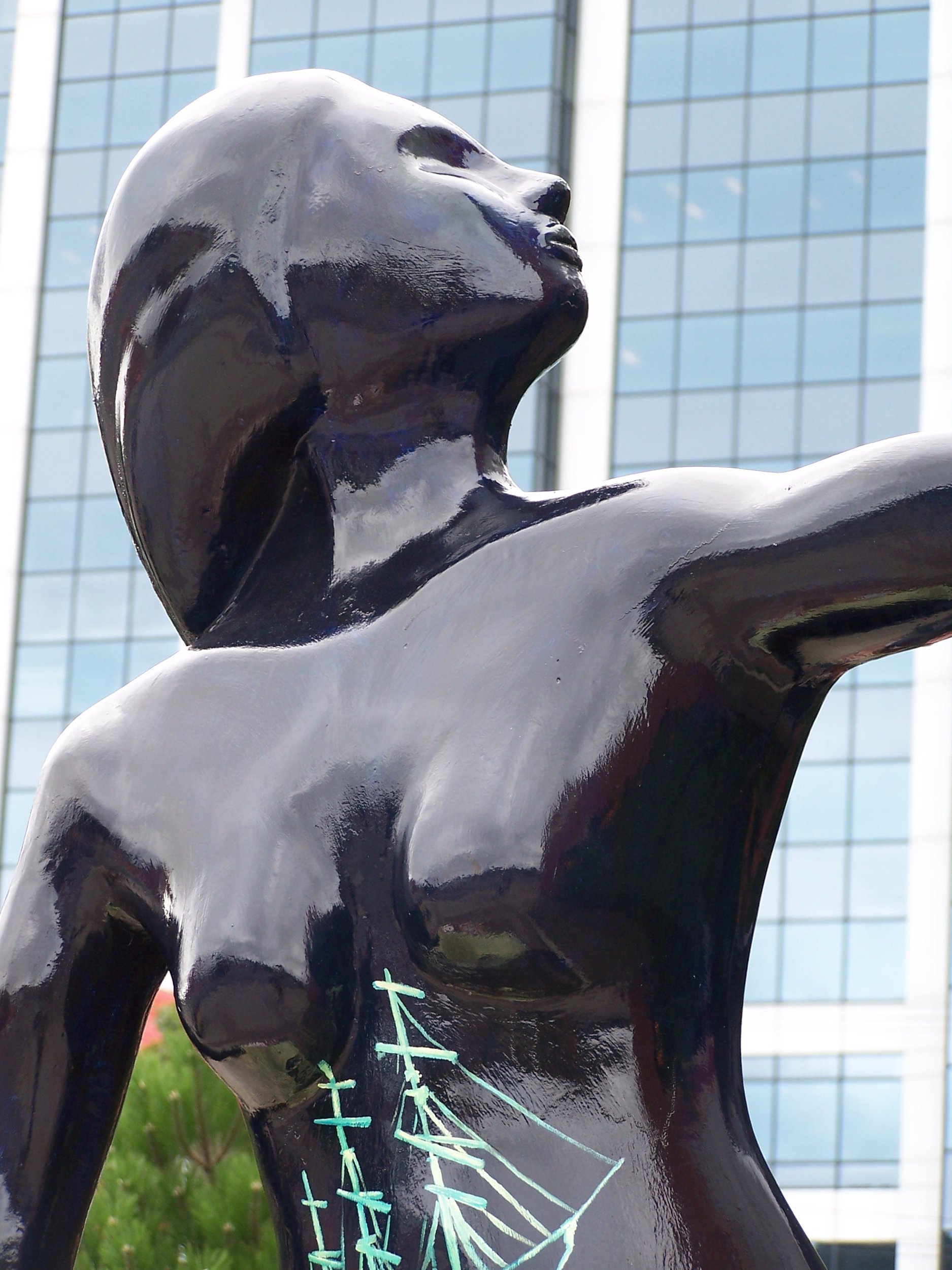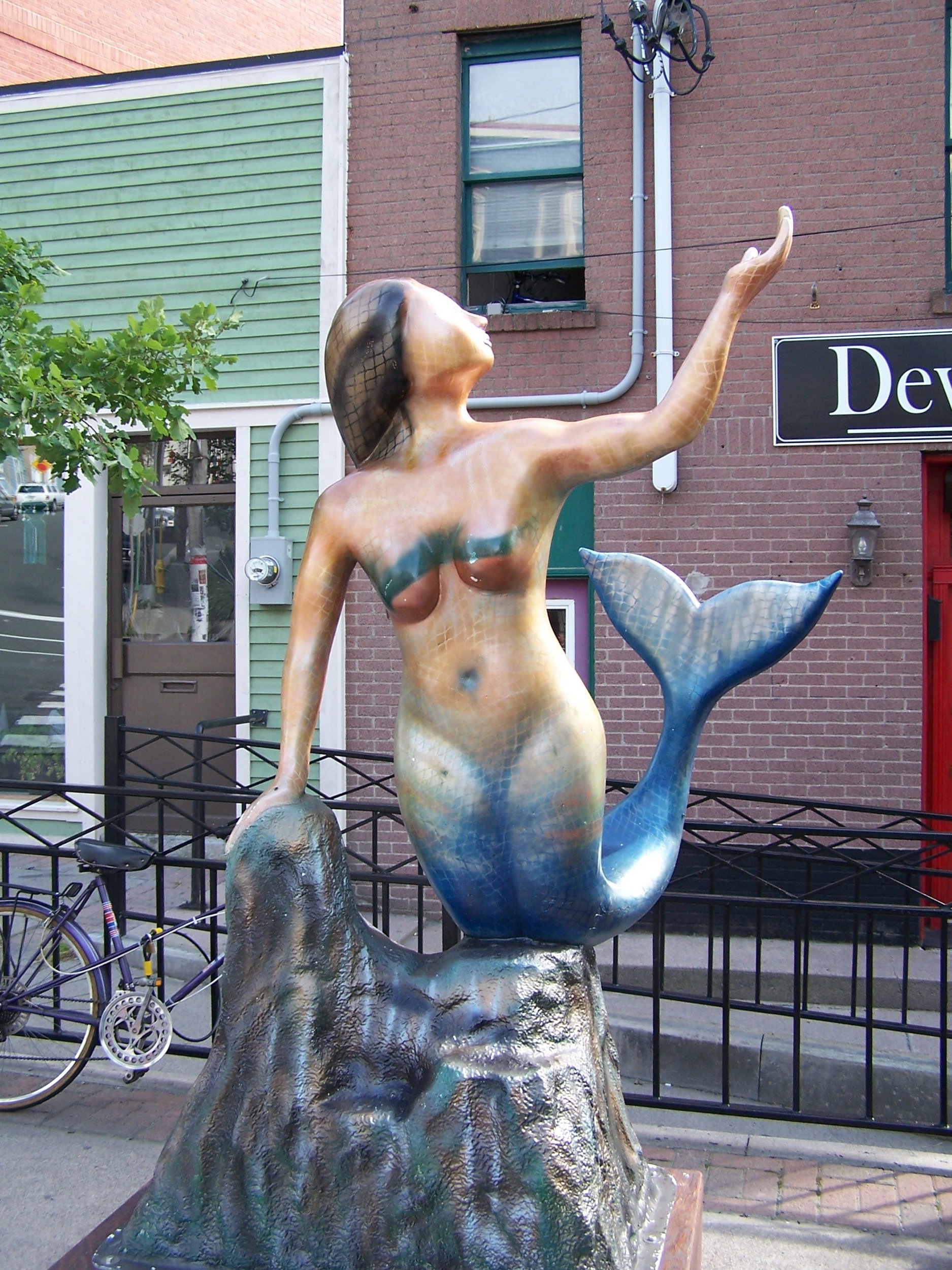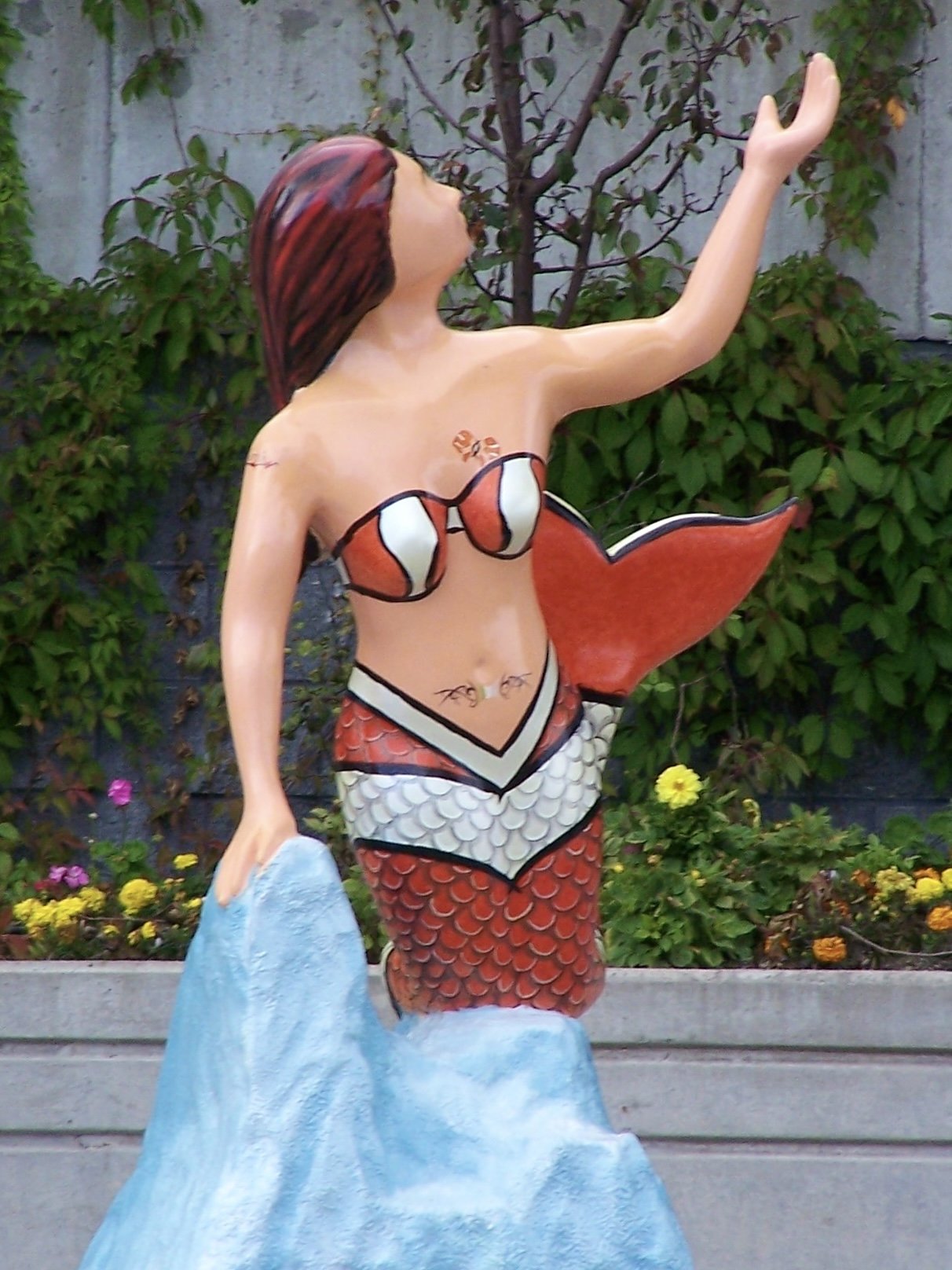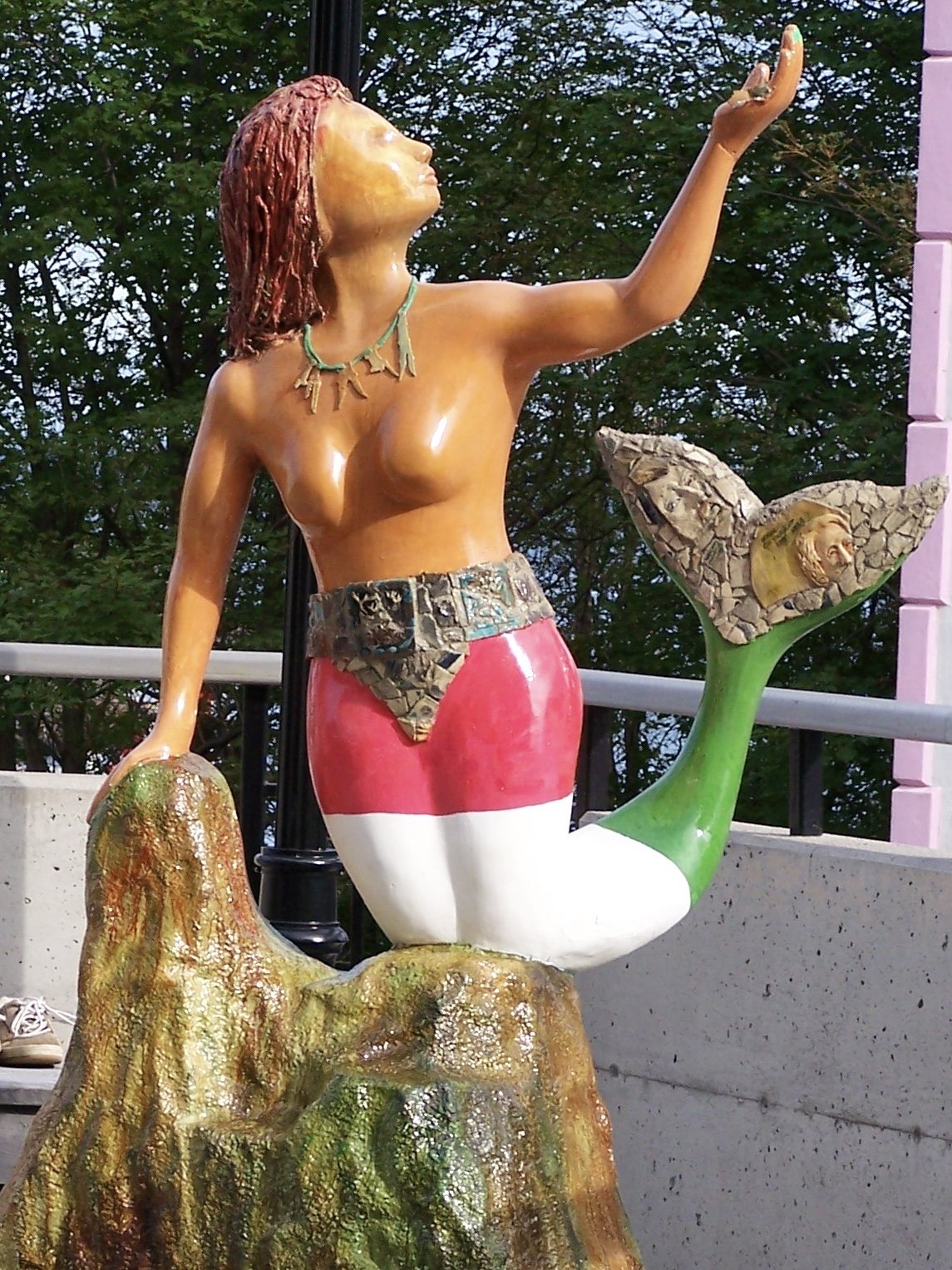Mermaids, Pirates and Propaganda
I may have been the only person on the planet to have seen Disney’s new trailer for Peter Pan and Wendy and have thought: Whitbourne.
Not the town, the historical figure.
Richard Whitbourne’s life in Newfoundland sounds like something out of J.M Barrie —full of pirates and mermaids. At least It sounds like it was when he describes it.
He may have had some ulterior motives, though.
Who is Richard Whitbourne?
Richard Whitbourne Historical Plaque, Trinity, NL
Sir Richard Whitbourne was an English colonizer who was active in Newfoundland from the late 16th and early 17th centuries.
He had a front row seat to some key moments in European/Newfoundland history including Sir Humphrey Gilbert’s claim to Newfoundland in 1583.
Whitbourne made history himself too. He held the first formal court of justice in Newfoundland at Trinity in 1615. He went on to become the governor of the short-lived colony at Renews but he really solidified his place in history through his writing.
Whitbourne the Writer
Whitbourne wrote a widely distributed book called A Discourse and Discovery of the New-Found-Land (1620). More than simply recording his time on the island, Discourse and Discovery was written with a specific goal in mind — encouraging the English to develop colonies and settle in Newfoundland. In A History of Newfoundland and Labrador Frederick Rowe describes it as a ‘promotional tract’… and that feels about right.
And, in aid of promotion, Whitbourne was not above presenting Newfoundland in ways that could be, charitably, described as mis-leading.
It might be more honest to call it colonialist propaganda.
-
The Following are some of Whitbourne’s descriptions of Newfoundland from Discourse and Discovery.
Whitbourne lived and wrote in the time of Shakespeare so their language was similar. I’ve chosen to paraphrased Whitbourne to reduce the 16th century language. Within each excerpt there is a link that will take you to a transcription of the original text.
Some of these I share because they offer, what I think to be misleading descriptions of the island, others because I think they offer an interesting insight into how Whitbourne thought of the place.
Here’s Whitbourne’s take…
On the Newfoundland Climate:
I shall not much need to commend the wholesome temperature of that country, seeing the greatest part thereof lies above 3 degrees nearer to the South, then any part of England doth.
And it hath been well approved by some of our Nation, who have lived there these many years, that even in the winter it is as pleasant and healthful, as England is.
On Growing Conditions:
The soil of this country in the valleys and sides of the mountains, is so fruitful, as that in diverse places, there the Summer naturally produceth out of the fruitful womb of the earth, without the labour of man’s hand…
On the Friendliness of the Now-Extinct Wolf
In the year 1615… the wolves and beasts of the country came down near them to the seaside, where they were labouring about their fish, howling and making a noise: so that at each time my Mastiff-dog went unto them (as the like in that country hath not been seen) the one began to fawn and play with the other, and so went together into the woods… and did return unto us without any hurt. Hereof I am no way superstitious, yet it is something strange to me, that the wild beasts, being followed by a stern Mastiff-dog, should grow to a familiarity with him…
On the Now-Extinct Great Auk:
These penguins [auks] are as big as geese, and fly not, for they have but a little short wing, and they multiply so infinitely, upon a certain flat island, that men drive them from thence upon a board, into their boats by hundreds at a time; as if God had made the innocency of so poor a creature, to become such an admirable instrument for the sustentation of man.
Aside from its less-than-honest rosy view, Discourse and Discovery is problematic in other ways. Whitbourne presents Newfoundland as a place to exploit. He is not respectful of the island’s indigenous people, or their way of life. He suggested converting them to Christianity. Repeatedly, the text reveals attitudes that we would not consider acceptable now; they shouldn’t have been considered acceptable then, either.
Several stories (of pirates and mermaids) I’m going to discuss were first recorded in Discourse and Discovery but they’ve taken on a life outside of that book. It’s informative, I think, to think of them in the context they were first published.
It brings something more to Whitbourne’s tales of marauding pirates and mysterious mermaids.
Whitbourne’s Pirates
It was the early 1600s and pirates were a problem in Richard Whitbourne’s Newfoundland.
The island was a desirable stop for a lot of pirates, not because Newfoundland held troves of gold and jewels but because it was full of ships, skilled sailors and provisions. Newfoundland was a place a pirate could get a new boat, re-stock his supplies and build a strong crew.
No pirate made better use of Newfoundland than Peter Easton.
Peter Easton’s Prisoner
Peter Easton, the Pirate Admiral, was in Newfoundland at the same time as Richard Whitbourne. By 1612 Easton was headquartered in Harbour Grace. From there he raided English vessels and built a crew.
While raiding ships, Easton captured Richard Whitbourne and held him for 11-weeks. Easton tried, to lure Whitbourne with the riches of pirate life but Whitbourne was uninterested:
…Famous Arch-Pirate, Peter Easton, came there, and had with him ten sayle of good Ships well furnished and very rich, I was kept eleven weekes under his command, and had from him many golden promises, and much wealth offered to be put into my hands, as it is well known: I did persuade him much to desist from his evil course; his intreaties then to me, being, that I would come for England, to some friends of his, and solicite them to become humble petitioners to your Majesty for his pardon.
Eventually Easton let him go and Whitbourne made good on his promise of seeking a pardon Easton. He needn’t have bothered, as it turned out. Unbeknownst to Easton, he had already been pardoned but, because communication was challenging in the 1600s, word had yet to reach him.
The pardon was re-granted but, by this point, Easton had left Newfoundland for the Mediterranean in search of Spanish gold. A short time later he retired and the remainder of his story is lost to history.
Whitbourne’s story goes on though, and soon he was tangling with another pirate — Henry Mainwaring.
The Mainwaring Mystery
By 1614 Easton was gone leaving Harbour Grace free for Henry Mainwaring who took over the Pirate Admiral’s base.
Like Easton, Mainwaring knew the island’s fishing grounds would be a good place to build his pirate crew and he went about it with a vengeance. Some of the men joined him happily, others weren’t given a choice. It’s said, he gathered about 400 sailors from the Newfoundland coast — about one out every six crewmen was enlisted.
During this time Whitbourne had a strange encounter with Mainwaring.
Whitbourne wrote:
Sir. Henry Mainwaring was upon the coast with five good ships strongly provided. He caused me to spend much time in his company and return to England with him although I was bound to Marsailles.
It’s not entirely clear what Whitbourne meant by “caused me to spend much time.” Nor is it clear how Mainwaring brought about a shift in Whitbourne’s travel plans — from Marseilles to England.
Whitbourne leaves us wondering.
Given that Discourse and Discovery is largely about persuading people to come to Newfoundland, it seems a bit odd that Whitbourne mentions pirates and abductions at all. It doesn’t make the place seem very safe.
Nor does Whitbourne’s mermaid encounter, for that matter.
Theodor de Bry engraving inspired by Whitbourne's mermaid in St. John's (1628).
Newfoundland’s Most Famous Mermaid
Early in the morning Richard Whitbourne and his men were standing beside the harbour in St. John’s. He spotted something unusual in the water. Whatever it was, it was coming quickly toward him.
As it drew closer he saw a creature unlike anything he’d seen before.
The being’s face, eyes, nose, mouth, chin, ears, neck and forehead seemed to be those of a woman — beautiful and well-proportioned. Its back was smooth and white. Around its head, and continuing down its neck, were blue streaks resembling hair.
The creature drew close, as close as a long pike, Whitbourne recalled.
Nervous, he stepped back.
-
The following is Richard Whitbourne’s description of the mermaid as recorded in his book Discourse and Discovery of New-Found-Land.
“Now also I will not omit to relate something of a strange creature that I first sawthere in the year 1610, in a morning early, as I was standing by the water side, in the harbour of St. John's, which I espied verie swiftly to come swimming towards me, looking cheerefully as it had beene a woman by the face, eyes, nose, mouth, chin, ears, necke and forehead: it seemed to be so beautiful, and in these parts so well proportioned, having round about upon the head all blew strakes resembling haire downe to the necke (but-certainly it was haire), for I beheld it long, and another of my companie also, yet living, that was not then farre from me; and seeing the same comming so swiftly towards mee, I stepped backe, for it was come within the length of a long pike; which, when this strange creature saw that I went from it, it presently thereupon dived a little under water, and did swim to the place where before I landed; thereby I beheld the shoulders-and backe downe to the middle to be as square, white and smooth as the backe of a man, and from the middle to the hinder parts pointing in proportion like a lbroad hooked arrow. How it was proportioned in the forepart, from the neck and shoulders, I know not; but the same came shortly after to a boat, wherein one William Hawkridge, then my servant, was, that hath since bin captain in a ship to the East-Indies, and the same creature did put both his hands upon the side of the boat, and did strive to come in to him and others taken in the said boate; whereat they were afraid, and one of them strooke it a full blow on the head; when it fell off from them, and afterwards came to two other boats in the harbour; the men in them fled for feare to land. This (I suppose) was a Mermaid; now, because divers have written much of Mermaids, I have presumed to relate what is most certaine of such a creature that was seen at Newfoundland; whether it was a Mermaid or no, I know not; I leave it for others to judge.”
When the creature saw Whitbourne retreat it sunk beneath the surface of the water but continued exploring the harbour.
Before long it’s attention was drawn to a boat.
Aboard the boat was Whitbourne’s servant William Hawkeridge and a crew of his men. The creature approached the boat, put both hands upon the side and tried to climb aboard. The men were afraid. They quickly struck it on the head and it fell back into the water but the creature wasn’t done yet.
It approached two other boats in the harbour. As it came toward them the men fled for land.
Whitbourne ends the story there.
The mysterious creature, Whitbourne supposed, was a mermaid. He concludes Discourse and Discovery with the following epilogue:
Now because diverse have written much of Maremaids, I have presumed to relate, what is most certaine of such a strange Creature that was seene at New-found-land: whether it were a Maremaid or no, I know not; I leave it for others to judge.
It’s a sort of an intriguing mystery — what did Whitbourne see?
There are a few popular theories.
Theory 1: A Seal
The most popular explanation for Whitbourne’s mermaid is that he saw a seal.
Maybe he did, but mistaking a seal for a mermaid would mean that Whitbourne — a seasoned sailor — didn’t recognize a seal when he saw one. I question that. He mentions seals several times in Discourse and Discovery — including on the page preceding the mermaid tale.
On top of that, Whitbourne specifically mentions the mermaid’s ears. I don’t think any local species of seal has ears that might be confused for those of a woman, let alone remarked upon as beautiful or well-proportioned.
Theory 2: A Porpoise
An 1823 edition of the Asiatic Journal and Monthly Register contains an article on Mermaid traditions. The author suggests that Whitbourne saw a porpoise.
He points out that the light skin colour and even blue streaks correspond to a young porpoise.
Again, maybe he did.
Harbour Porpoise, Ecomare/Salko de Wolf/, Wikimedia CC by SA 4.0 (International).
But, as with the seal, it doesn’t really fit with Whitbourne’s description of ears.
I’m not sure how to square it with the creature putting both hands on the boat and trying to climb in either. It doesn’t sound very porpoise-like.
Theory 3: Absolutely Nothing
It’s possible Whitbourne’s mermaid is, more or less, a work of fiction and that he didn’t see anything at all.
The idea that Whitbourne’s mermaid was a tall tale (or half-fish story?) has been suggested since at least the early 1700s.
If it is fiction, why might Whitbourne include such an unusual tale?
A Mermaid for Marketing
In his introduction to Discourse and Discovery Whitbourne writes that it’s a “hard matter to persuade people to adventure into strange countries. Then, through the rest of the volume he attempts to do just that — sell Newfoundland to colonists.
In marketing the island, he appears to have had little difficulty twisting the truth. For example, Whitbourne tells his readers that he doesn’t need to “commend the wholesome temperature of that country, seeing the greatest part [is] 3 degrees neerer to the South, then any part of England.”
It was no lie, I guess, but it doesn’t feel honest.
He let readers assume further south equated with warm. If they didn’t know about the chilling effects of the Labrador Current it didn’t matter, as long as they signed up.
The whole text is full of bent truths, like that. So, perhaps the mermaid is a ‘bent truth’ too. The ‘sighting’ may have been designed to sell Newfoundland as a place of wonders; a place where fantasy becomes reality.
On top of that, it’s not hard to imagine a scenario where Whitbourne includes a tall tale to appeal to adventurers… and maybe that’s why he recorded his fairly benign-sounding pirate encounters too.
After all, it was the adventurous type Whitbourne most needed to convince — who else was going to agree to start a new life across the ocean?
We’ll never know what, if anything, Whitbourne saw swimming in St. John’s harbour. Regardless, the ‘mermaid’ became a part of the first-ever Newfoundland marketing package.
Even after 400 years, mermaid tales are still a compelling marketing strategy — Newfoundland and Labrador is still using them today.
Draw Your Own Conclusions
Much as Whitbourne said, I leave it to others to judge.
I’m pretty sure there was no mermaid in St. John’s harbour 400 years ago but whether the whole ‘marketing thing’ played a role in the story is up for debate.
You’re going to have to draw your own conclusions.
-
A Discourse and Discovery of New-Found-Land, Richard Whitbourne
Westward Hoe for Avalon, Richard Whitbourne & T. Whitburn
Old and New Mermaids, Asiatic Journal and Monthly Register, 1832
Climate and Capitalism: English Perceptions of Newfoundland's Natural Environment and Economic Value, 1610-1699, Joshua Tavenor
Sir Richard Whitbourne, Heritage NL
Theodor De Bry, Wikipedia
Remember these Mermaids?
In the summer of 2006 downtown St. John’s was decorated with mermaids. Each statue was painted by a different artist.
The project was called ‘Mermaids in the City.’ At the end of the summer the mermaids were auctioned for charity.
I still spot some of them around the province from time to time.

